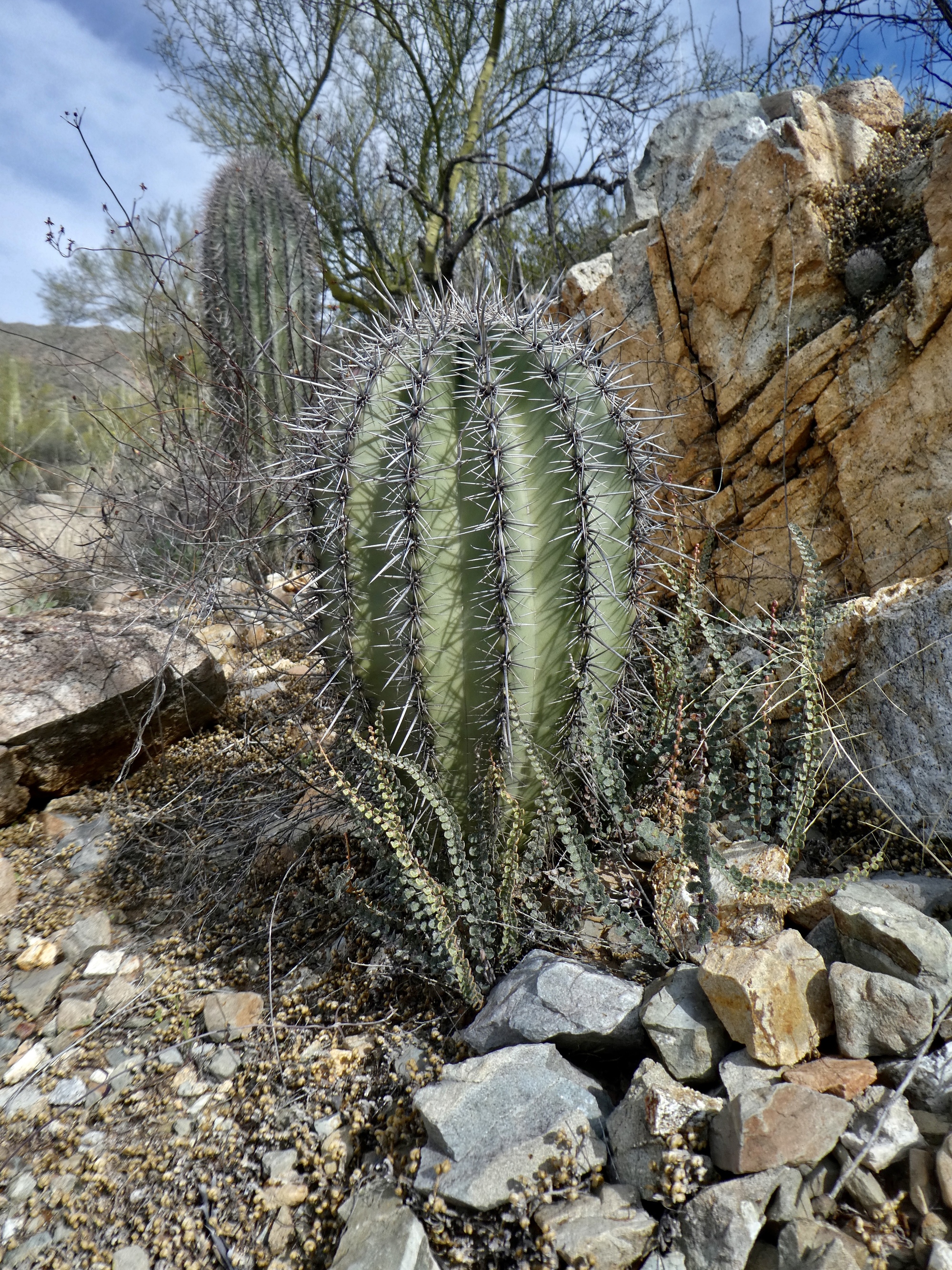February 5, 2020
In Tucson: Hiking in Saguaro National Park, West
Big news
So I said we’d only post if there was something newsworthy to report. Here’s some news:

| Heart | 1 | Comment | 1 | Link |
Those of you who have been following us awhile may remember this beautiful couple that we crossed paths with a few times in Southern Italy last spring, and then later stayed at their home in Castellabate on our way south back to Sicily. It’s one of our fondest memories from that tour.
They’re getting married! The ceremony will be on the beach at the same spot where we picnicked together during our too-brief visit. And we are so sad that we can’t be there to help them celebrate, but it just isn’t in the cards for this year. It’s great hearing from them though, and knowing they’re still there waiting for us to drop by again. Maybe next year?
Saguaro National Park, West
As long as I’m posting anyway, we might as well toss in a few photos of the day’s hike. It’s still too cold to feel like hopping on the bikes today, so we decided to check out the other half of Saguaro National Park. It’s about fifteen miles west of town, in the middle of the Tucson Range.
We enjoyed a really beautiful out and back hike on the Hugh Norris Trail. It’s surprisingly different than the east unit -at least the part we hiked in then - more rugged terrain, and surprisingly different vegetation. More ocotillo, less palo verde; and many more quite small saguaro cacti, some that look like they must be only a year or two old. I think we probably enjoyed this hike even more than yesterday’s.
That’s it for hiking for the tour though, we think. Warm weather is due to return tomorrow, and I’m sure we’ll be back on the bikes for the few days remaining before we fly home. This weekend, conditions look perfect for a ride up Mount Lemmon.

| Heart | 5 | Comment | 0 | Link |

| Heart | 3 | Comment | 0 | Link |

| Heart | 1 | Comment | 0 | Link |

| Heart | 4 | Comment | 0 | Link |

| Heart | 3 | Comment | 1 | Link |
https://www.fireflyforest.com/flowers/299/calliandra-eriophylla-fairyduster/
4 years ago

| Heart | 2 | Comment | 3 | Link |
http://swbiodiversity.org/seinet/taxa/index.php?taxon=3387
http://swbiodiversity.org/seinet/taxa/index.php?taxon=3397
4 years ago
4 years ago

| Heart | 1 | Comment | 2 | Link |
https://wildflowersearch.org/search?oldstate=gmc%3A32.296%2C-111.120%3Bcat%3AX%3Bcolor%3Aignore%3Blocation%3ATucson%2C+AZ+85745%2C+USA%3Belev%3A2676%3Bgms%3A11%3Bsize%3Aignore%3B&buttonName=none&hab=&Elev=&Submit=Submit+Values&PlantName=echinocereus
Also notice the bumpy little dried up moss. It would green up nicely in wet weather. Not going to narrow down the ID any closer than moss because not only are they hard to distinguish, but there are over 150 species in the area! Amazing biodiversity of the Sonoran Desert!
4 years ago
4 years ago

| Heart | 1 | Comment | 2 | Link |
http://www.desertmuseum.org/books/nhsd_mammillaria.php
4 years ago
4 years ago

| Heart | 4 | Comment | 0 | Link |

| Heart | 5 | Comment | 1 | Link |
Found a pretty good one:
http://blogs.goaj.org/gfraher/tag/teddy-bear-cactus/
4 years ago

| Heart | 5 | Comment | 0 | Link |

| Heart | 1 | Comment | 2 | Link |
4 years ago
4 years ago

| Heart | 3 | Comment | 0 | Link |

| Heart | 3 | Comment | 1 | Link |
http://swbiodiversity.org/seinet/taxa/index.php?taxon=1960
Orange one is a globe-mallow, possibly Coulter's.
http://swbiodiversity.org/seinet/taxa/index.php?taxon=3803
Blue one might be a Phacelia.
https://plants.usda.gov/plantguide/pdf/pg_phta.pdf
4 years ago

| Heart | 1 | Comment | 5 | Link |
http://swbiodiversity.org/seinet/taxa/index.php?taxon=2022
4 years ago
4 years ago
4 years ago
I love imagining how much fun you're having with this journal, seeing so many familiar plant faces.
Thanks for all of the great information and knowledge you add to so many cycle touring journals!
4 years ago
4 years ago
| Rate this entry's writing | Heart | 7 |
| Comment on this entry | Comment | 2 |
By the way, sitting here at home in comfort with all the time in the world I have the gall to remind you that the promised walked tour of Bisbee is still outstanding!
4 years ago
And thanks for the prompt about Bisbee, whip! I needed that.
4 years ago








Scott - I loved your stories about the time you and Rachael spent with Maria and Jack. Such interesting, energetic, talented, and kind people!!
4 years ago